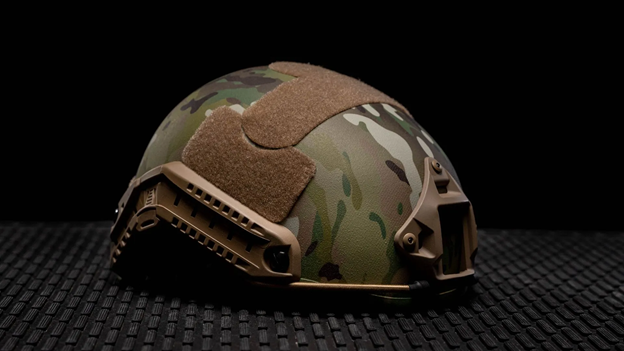Maintaining ballistic helmets is essential to ensure optimal performance and longevity. Exposure to diverse temperatures and weather conditions throughout its lifespan can degrade their effectiveness. It’s crucial to protect them from prolonged moisture, extreme temperatures, and direct sunlight to prevent damage. After exposure, regular maintenance is advisable. Let’s explore the necessary steps in detail.
Frequency and Methods of Cleaning
When exposed to heavy rain, snow, or excaessive heat for extended periods, immediate maintenance is advisable after use. In milder conditions, cleaning every few months is sufficient. Use mild soap, soft sponges, soft bristle brushes, lukewarm water, and microfiber towels for drying. Avoid harsh chemicals, abrasive scrubbers, and hot water to preserve the helmet’s finish.
Cleaning the Helmet Shell
Remove any covers or accessories mounted on the helmet before cleaning its outer shell. Use lukewarm soapy water with a soft sponge or brush to scrub away excess dirt and grime. Consider removing side rails and the shroud based on the buildup severity. Soft magic erasers can effectively remove stubborn stains or residues.
Care for Interior Padding and Straps
Due to sweat accumulation, the padding and suspension system of the helmet may develop odors with use. Remove them from the helmet for cleaning. Hand wash the padding in lukewarm water using mild or natural detergents, lightly scrubbing with a soft bristle brush to remove dirt. Thoroughly rinse and air dry. Repeat the process for the suspension system.
Proper Storage
Storage Environment
It is ideal to store your helmet at room temperature. We recommend using a designated padded storage bag for both storage and transportation to protect your helmet and additional accessories from unnecessary exposure and damage. If you plan to store it in a safe or similar enclosure, it’s crucial to use desiccants to prevent moisture buildup. Additionally, when storing for extended periods, remove batteries from helmet accessories to prevent decay.
Avoiding Harmful Exposures
Keep your helmet away from direct sunlight, extreme temperatures, and harsh chemicals as prolonged exposure can negatively impact its integrity. When transporting, use a padded helmet carrier bag to safeguard against accidental drops or impacts. Consider storing helmet accessories inside the helmet within the carrier for added protection. Many carriers feature MOLLE attachments, enabling you to secure them to other bags or gear.
Regular Inspections
Monitor your helmet for wear and damage after each use, whether during training or in the field. Regular inspections are critical. While damaged padding, suspension, rails, and shrouds can often be replaced, heavily damaged shells may necessitate replacing the entire helmet. Inspect rails and shrouds frequently as they secure accessories to the helmet; neglecting this could lead to accidental dislodging and accessory damage. Look out for cracks, dents, or other signs of degradation on the shell. Immediately discontinue use if the shell is compromised by any form of penetration to prevent potential injury or fatality.
Conclusion
The adage “take care of your equipment and it will take care of you” holds particularly true for ballistic helmets. It’s essential to maintain your helmet regularly by cleaning both the interior and exterior. After each use and cleaning session, ensure proper storage to avoid unnecessary exposure and potential damage. Utilize a designated helmet carrier for safe transportation and storage. Conduct routine inspections to prevent accidental damage to helmet accessories. By prioritizing these steps, you can extend the lifespan of your helmet and ensure it remains reliable whenever you need it.

